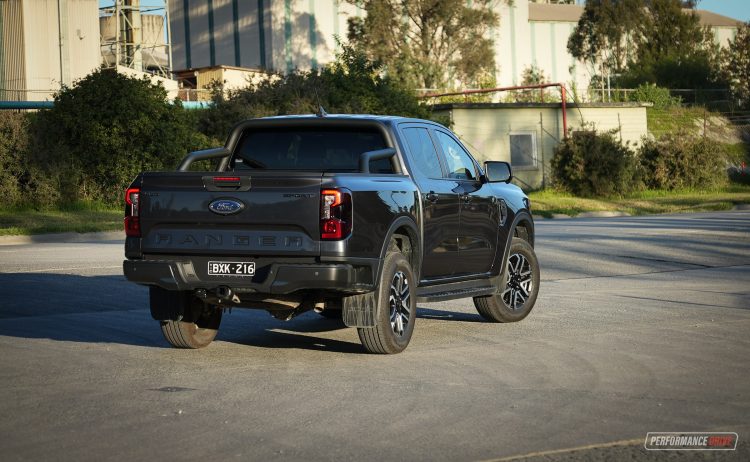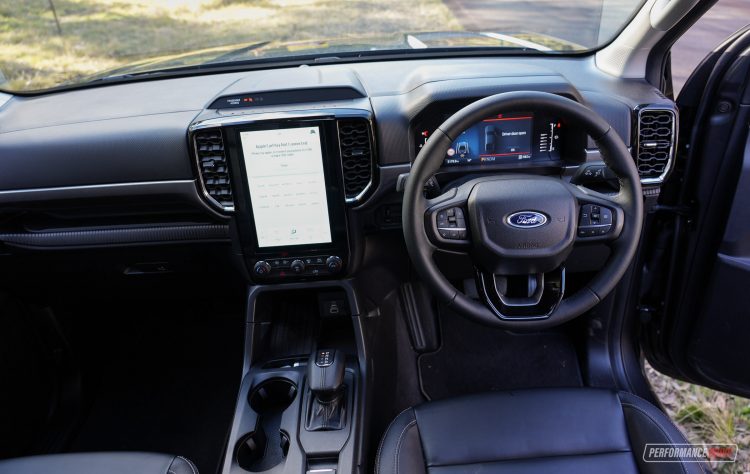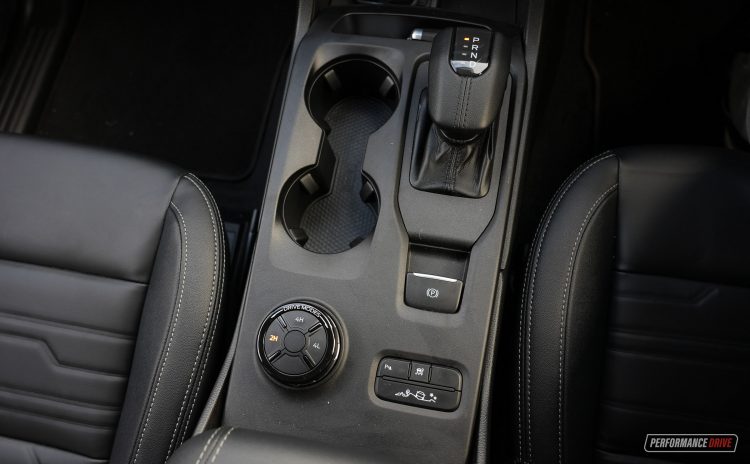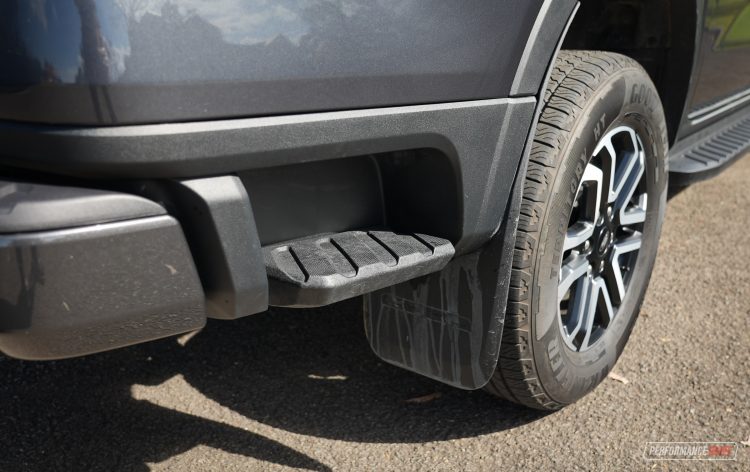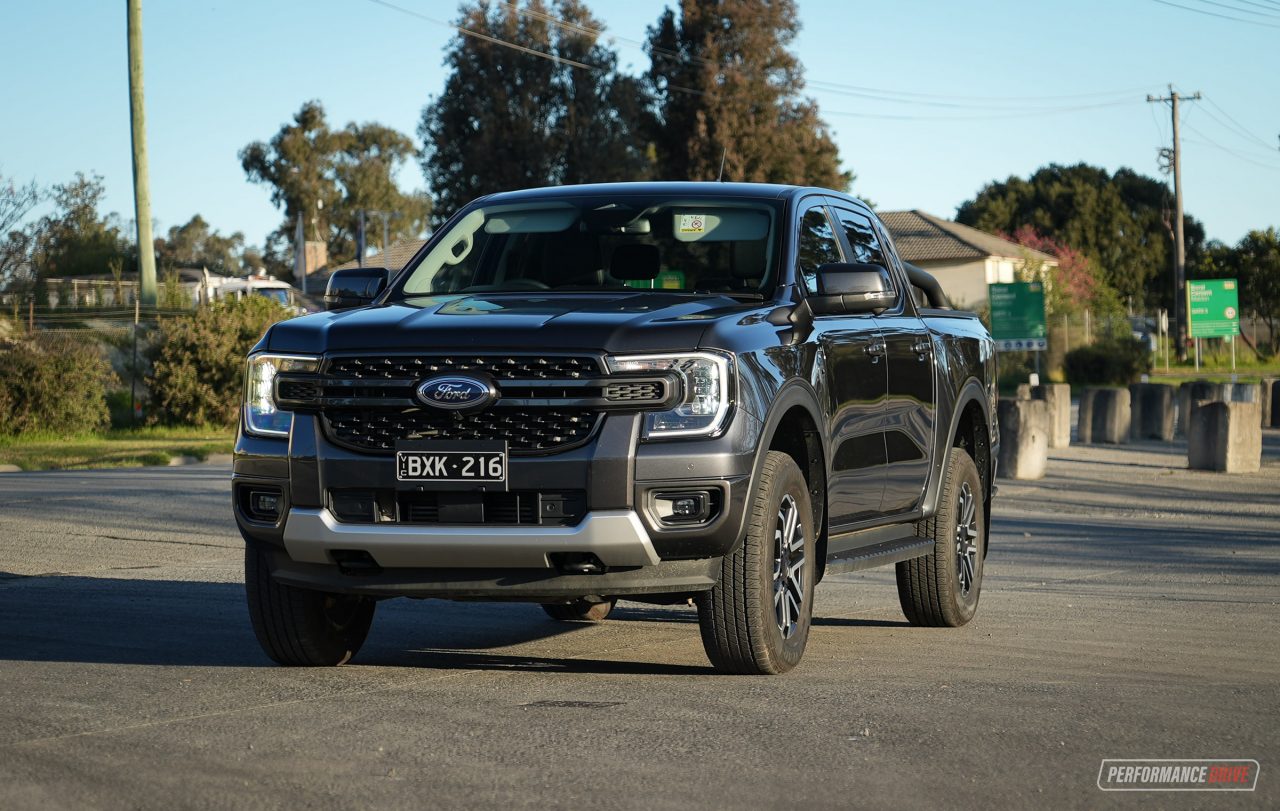
[ad_1]
The 2023 Ford Ranger Sport is one of the most important new cars this year. When Ford Australia was tasked with developing the outgoing Ranger as part of the Ford T6 program, the scale and significance of this was enormous.
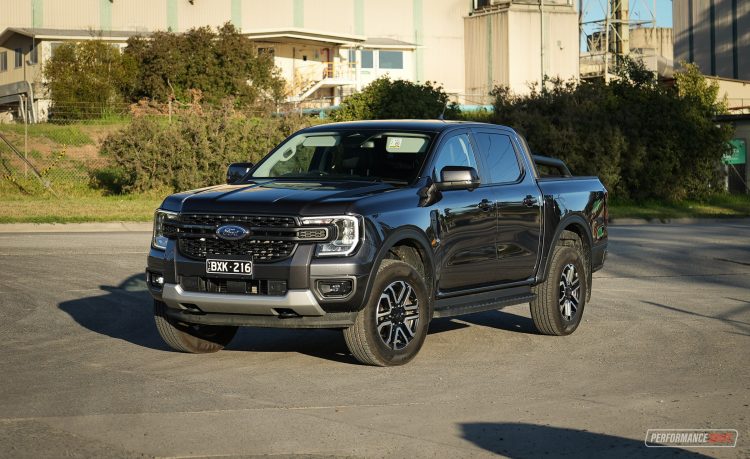
This original model was instrumental in securing Ford Australia’s role as a hub for design and engineering in the post-production environment. In later years, the Ranger was adapted for the US market, and the T6 platform was based on the highly successful Bronco.
Importantly, it also strengthened Ford’s market position, giving the Toyota HiLux its first serious threat to existence. The stakes are apparently higher this time around, as the upcoming Volkswagen Amarok derivative shares bones with this new model. This gives it added pressure to meet the expectations of Volkswagen customers, including the perceived quality of the interior.
With some smart features including an available 12-inch tablet touchscreen inside and exterior lighting, the Ranger should meet the needs of 180 international markets. We’ve already sampled the 2023 Ranger at launch and the fire-breathing Ranger Raptor with its 292kW petrol V6. But this is our first real impression of the new Ranger, in both V6 and 2.0L Sport trim, in a long time.
2023 Ford Ranger Sport 2.0TTD – SPECIFICATIONS
engine: 2.0-liter twin-turbo four-cylinder diesel
Entrance: 154 kW at 3750 rpm / 500 Nm at 1750-2000 rpm
Method of transmission: 10-speed automatic
Disc type: Part Time RWD/4WD, Rear Differential Lock
Wheels: F&R: 18×7.5, 255/65
ANCAP: Five stars
Tare weight: 2224 kg
Power to weight: 14.44:1 (kg:kW)
Official fuel economy: 7.2 l/100 km
Savings during the test: 8.0 l/100 km
Fuel Capacity/Type: 80 l/diesel
Energy efficiency: 21.38 kW: l/100 km
0-60 km/h: 4.48 seconds*
0-100 km/h: 9.26 seconds*
60-110 km/h: 6.48 seconds*
1/4 mile: 16.89 seconds at 135.6 km/h*
Maximum acceleration: 0.679 g
Braking 100-0 km/h: 3.47 seconds for 44.42 meters*
Maximum deceleration: -1.113 g
Decibel at idle: 47*
Peak decibel at 60-100 km/h: 79*
Price from: 63,690 USD
2023 Ford Ranger Sport V6 – SPECIFICATIONS
engine: 3.0-liter turbodiesel V6
Entrance: 184 kW at 3250 rpm / 600 Nm at 1750-2250 rpm
Method of transmission: 10-speed automatic
Disc type: Part Time RWD/4WD, Rear Differential Lock
Wheels: F&R: 18×7.5, 255/65
ANCAP: Five stars
Tare weight: 2282 kg
Power to weight: 12.40:1 (kg:kW)
Official fuel economy: 8.4 l/100 km
Savings during the test: 9.4 l/100 km
Fuel Capacity/Type: 80 l/diesel
Energy efficiency: 21.90 kW: l/100 km
0-60 km/h: 3.75 seconds*
0-100 km/h: 7.98 seconds*
60-110 km/h: 5.65 seconds*
1/4 mile: 15.90 seconds at 143.3 km/h*
Maximum acceleration: 0.717 g
Braking 100-0 km/h: 3.45 seconds for 43.92 meters*
Maximum deceleration: -1.196 g
Decibel at idle: 46*
Peak decibel at 60-100 km/h: 76*
Price from: 66,690 USD
* Figures verified by PerformanceDrive for the day. Factory requirements may vary
2023 Ford Ranger Sport – PACKAGE
Priced at $63,690 for the 2.0 BiTurbo, the Ranger Sport is the third level of the range, above the base XL and the intermediate XLT and XLS. Only the $67,190 Ranger Wildtrak and $85,490 Raptor rank higher (excluding on-road costs). Stepping up to the V6 engine adds $3,000 to the bill.
The boxy styling is a fresh and modern interpretation of the same design theme used on the US-market F-150. Details like the tail light pattern and even the font for the badges look neat and refined.
The new Ranger has lots of smart new features, including an integrated rear tray foot with slots and attachment points inside the tray and on the edge. There are clamp mounts and a 12v socket, now the width has been increased to accommodate a European standard pallet (1200mm x 800mm pallet). Payload is 942kg for the 2.0-litre engine and 934kg for the V6, with a gross combined weight (GCM) of 6350kg and 6400kg respectively. Towing capacity with brakes remains at 3,500 kg (750 kg without brakes).
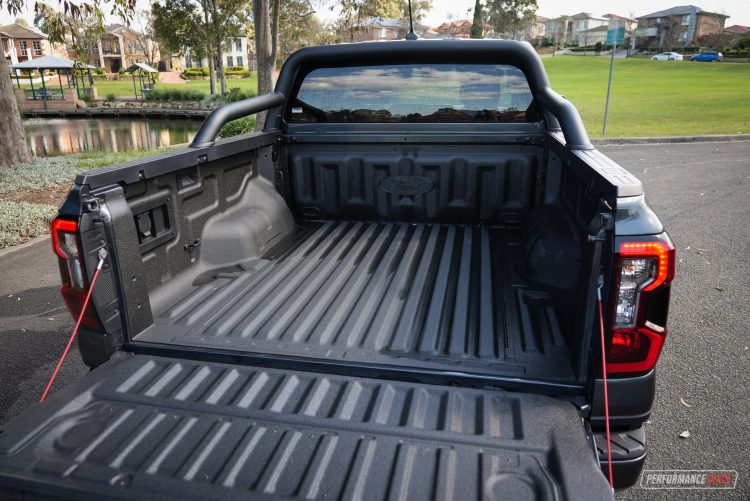
While we’re talking about dimensions, the overall width and wheelbase have been increased by 50mm with less overhang. Ranger in sports trim now measures 5,370mm in length, 1,918mm in width, 1,884mm in height with a 3,270mm wheelbase. The approach angle is 30 degrees, the departure angle is 25.6, and the ground clearance is a decent 234 mm.
In terms of safety, the Ranger received a five-star ANCAP rating and is many firsts in this segment. There are no less than nine airbags, including knee, inner and outer side airbags and a curtain, as well as a new central airbag to protect the front passengers from a collision.

Other safety features include available Adaptive Matrix LED Headlights, Lane Keeping Assist, and more advanced and advanced versions of AEB and Adaptive Cruise Control. One feature we really like is the intelligent traffic sign recognition that detects when it’s a school zone. For us, this demonstrates the value of a vehicle designed in Australia for local conditions.
Additionally, the centerpiece of the cabin is a new tablet-oriented 10.1-inch (12-inch on Wildtrak) touchscreen with SYNC 4A system. It offers a world of features and depth never before seen in this segment. Some highlights include a unique off-road page that allows you to control and visually confirm various drive settings such as rear differential lock, view images from external cameras, and of course play with the car’s settings and control multimedia functions via wireless Android Auto and Apple CarPlay .

At the bottom it is complemented by a series of buttons and knobs, including volume/power, dual-zone climate and hazard. They are well integrated and do not interfere with the minimalist design. The screen itself is fast, has a sharp image and features like finger zoom that feel as modern and up-to-date as possible.
The new selector for the 10-speed automatic is pleasant to operate and reminds us of the “xenomorph” alien from the 1980s “Alien” film franchise. It automatically goes into park mode if you turn off the engine in Drive mode.
All Rangers are covered by a five-year/unlimited mileage warranty with a limited cost service at intervals of every 12 months or every 15,000 km, whichever comes first.
2023 Ford Ranger Sport – DRIVE
This is where the generation leap forward for this new model is most evident; in the cabin and feeling on the road. Thanks to the telescopic and height-adjustable steering wheel, it has become much easier than before. The interior details and the geometric pattern on the leather seats with embossed “Sport” logo are subtle but stylish. The semi-digital instrument panel provides clear and concise information, including a digital speedometer and animations of the car when starting.
Press the start/stop button on the steering column and the diesel quietly roars to life. The V6 is particularly quiet and refined, and not just compared to the 2.0L, but straight up for a diesel. After driving the car, you can’t help but be impressed by the smooth and intuitive operation of the gearbox, which makes the most of the flexible power and torque of the engine. While there’s a bit of lag in both engine options, it seems less pronounced than the competition, and the roll-in acceleration makes it a responsive and predictable gap-filler in traffic. Again, it’s the V6 that appeals to us most with its excellent low end.
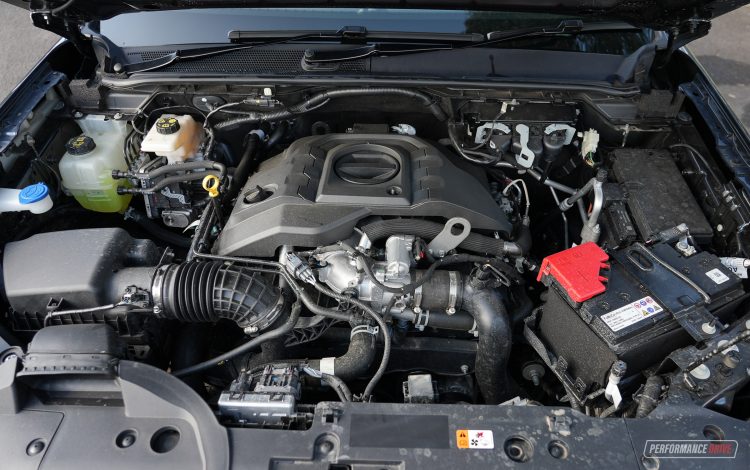
The cruise is relaxed and refined, with minimal noise interference or effort from the drivetrain. We appreciated the Limit button on the steering wheel, which uses traffic sign recognition to stop the car from exceeding the posted speed limit unless the accelerator is fully depressed.
For something with rear leaf springs, the Ranger feels wonderfully tied down – no doubt helped by the new external shock absorbers. But in the wet, it can get a little out of whack until a well-tuned DSC quickly takes over. The steering is fantastic for the EPS setup, with precision, good damping feel and confidence-inspiring turn-in.
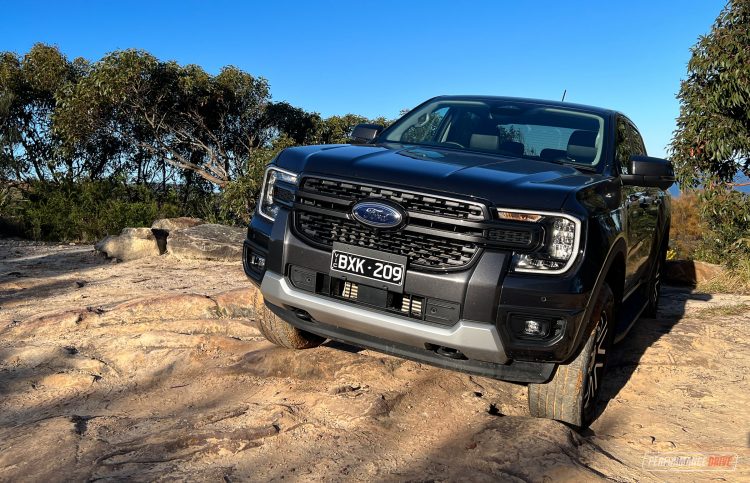
Off the beaten track, the Ranger has extra underbody protection, 234mm ground clearance and selectable driving modes: Normal, Eco, Towing, Slippery, Mud and Sand. They proved effective for our off-road trip. The previous Ranger was well proven off-road and this new model only builds on that.
The four-cylinder BiTurbo engine develops 154 kW and 500 Nm, and its consumption is 7.2 l/100 km. Meanwhile, the new 3.0-litre turbodiesel V6 produces 184kW and 600Nm, with a consumption figure of 8.4L/100km. Those official economy figures seem close to the mark, as we managed 8.0L/100km in the four-cylinder engine and 9.4L/100km in the V6.
Key differences between the two include more power from the V6, with a smoother feel and nicer sound. The extra 30kW and 100Nm are noticeable, but we still wouldn’t call it a performance tweak. We clocked 0-100 km/h in 9.26 seconds in the 2.0L and 7.98 seconds in the V6. If you want full power, you can always go for the 292kW Raptor.
2023 Ford Ranger Sport – VIDEO
2023 Ford Ranger Sport – VERDICT
It’s as sophisticated as any other dual-cab vehicle in its class. It’s so well put together and elegant without being flashy. It’s understated and modern. It’s not just good by ute standards, it’s good by car standards too.
In our opinion, the new Ranger has set the benchmark in its class for its capabilities and performance, safety and driving experience in all conditions and comfort. HiLux and company will have to work really hard to beat this newcomer. Expect plenty to go around if the offer pans out.
PROS:
– Improved new cabin with excellent ergonomics
– The V6 offers first-class refinement
– SUV-like handling and high-speed stability
– Technology and its integration
– Strong and beautiful appearance
– Versatile and thoughtful functions in the tray and cabin
CONS:
– Slight lag off the line, especially the 2.0TTD
– Expensive
– Grip in wet weather can be a problem
– The V6 is lazier than expected
As always, if you’re thinking about buying a new car, don’t forget to click here to speak to our car buying specialists.
[ad_2]
Source link

